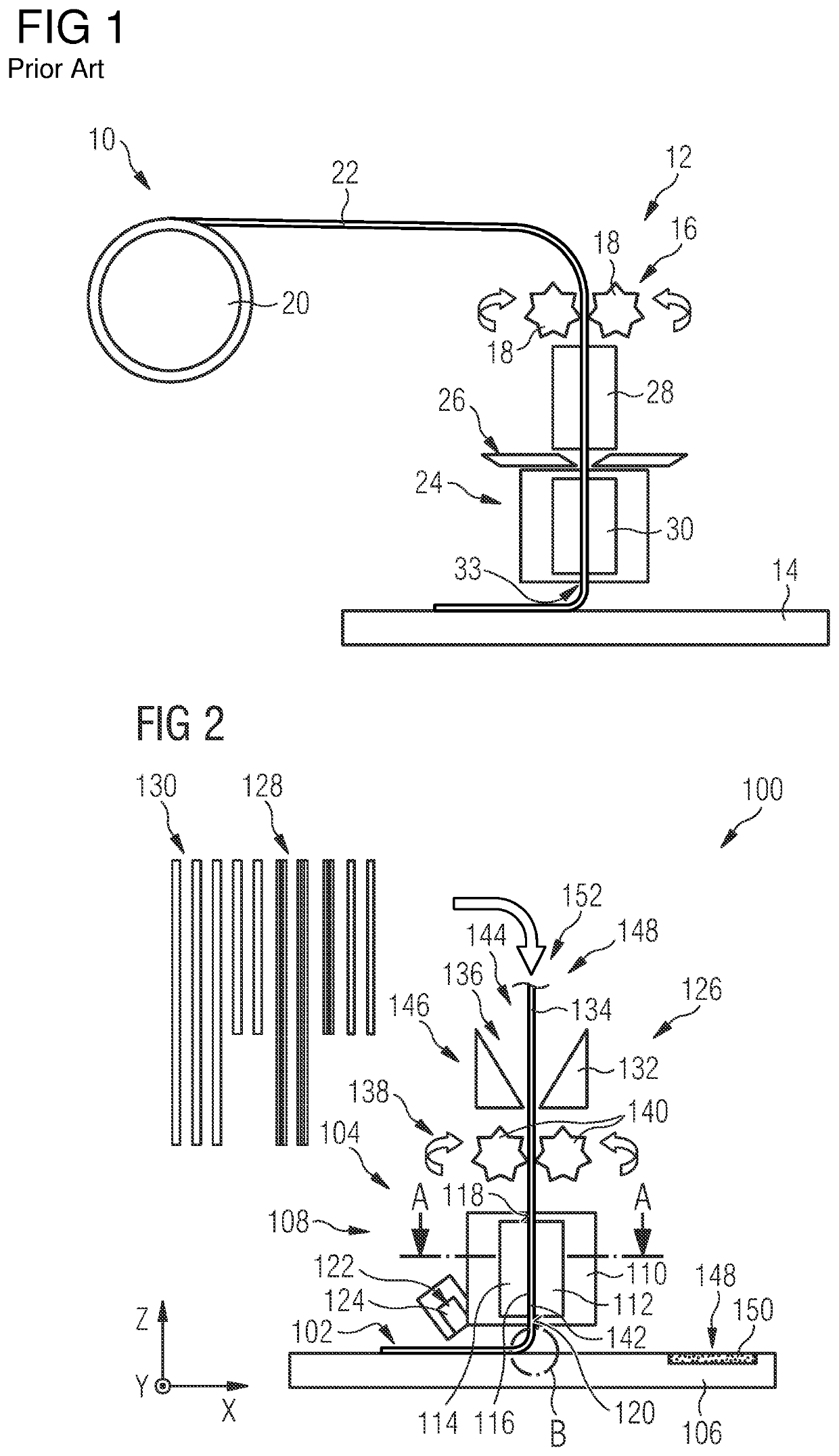Additive manufacturing device, additive manufacturing method, and profile rod therefor
a technology of additive manufacturing and profile rod, which is applied in the field of additive manufacturing device and additive manufacturing method, and the field of profile rod therefor, can solve the problems of in-situ impregnation, significantly more complex in terms of the quality of the part, and inability to achieve the effect of reducing the complexity of the additive manufacturing device, and improving the layered melting
- Summary
- Abstract
- Description
- Claims
- Application Information
AI Technical Summary
Benefits of technology
Problems solved by technology
Method used
Image
Examples
Embodiment Construction
[0116]Reference hereunder is made to FIG. 2 which schematically shows an additive manufacturing device 100. The additive manufacturing device 100 is configured so as to generate a component 102 layer by layer. The component 102 is, in particular, a component of an aircraft. The component 102 can be a plastic-material component, or a fiber-reinforced plastic-material component, or a mixture thereof. The component 102 may also contain metal inserts.
[0117]The additive manufacturing device 100 comprises a printing head 104 which, in a manner known per se, is movable relative to a printing bed 106.
[0118]A plurality of components can be accommodated in the printing head 104. The printing head 104 can comprise an additive manufacturing installation 108. The additive manufacturing installation 108 is configured for generating the component 102 layer by layer on the printing bed 106. The additive manufacturing installation 108 can have a housing 110.
[0119]The additive manufacturing installat...
PUM
| Property | Measurement | Unit |
|---|---|---|
| diameter | aaaaa | aaaaa |
| diameter | aaaaa | aaaaa |
| thicknesses | aaaaa | aaaaa |
Abstract
Description
Claims
Application Information
 Login to View More
Login to View More - R&D
- Intellectual Property
- Life Sciences
- Materials
- Tech Scout
- Unparalleled Data Quality
- Higher Quality Content
- 60% Fewer Hallucinations
Browse by: Latest US Patents, China's latest patents, Technical Efficacy Thesaurus, Application Domain, Technology Topic, Popular Technical Reports.
© 2025 PatSnap. All rights reserved.Legal|Privacy policy|Modern Slavery Act Transparency Statement|Sitemap|About US| Contact US: help@patsnap.com


